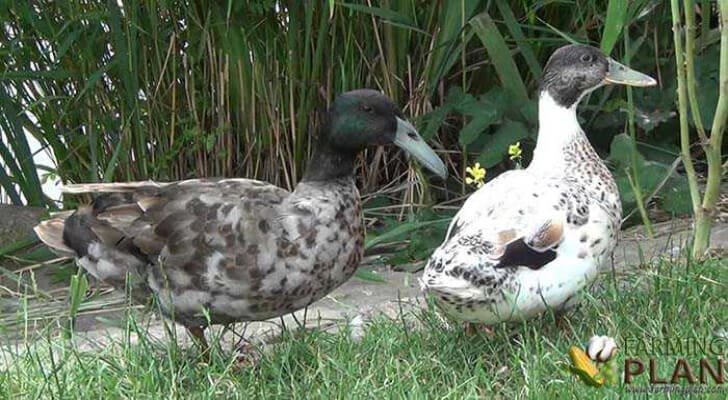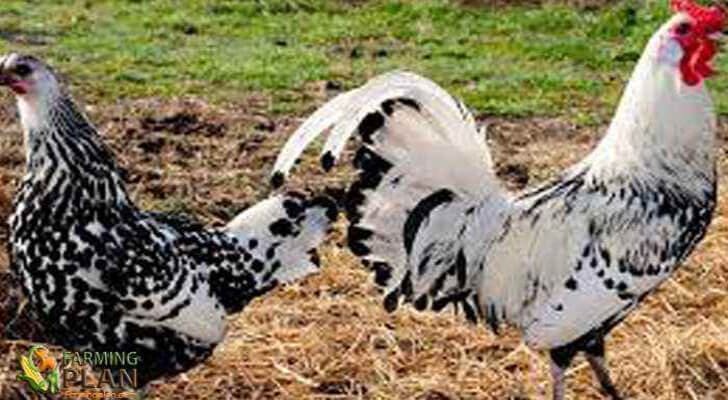The Hook Bill duck is an ancient breed, which originated in the Netherlands in the 17th century. It is one of the oldest aquatic breeds in Europe. Some historians say that this breed originated in Asia, but in reality, this species was raised and developed in Holland. It is also said that this breed originated from Indian runner ducks. They even found Hook Bill pure duck among groups of ducks Indian runners.
Formerly in Holland, the ducks kept them at home, and in the mornings the ducks went to the rivers to eat and at night they were returning home.

Characteristics of Hook Bill Duck
The Hook Bill duck is characterized by having a twisted beak, this is the main characteristic of how the hunters can differentiate this species from the wild ducks. Its beak made it preserved as an ornamental duck, but this breed is good egg-laying, this linked with its easy adaptation of eating fodder makes it one of the favorite breeds to breed in Holland.
They do not require excessive feeding compared to other breeds so that they can reproduce, which makes them highly accessible. The peaks of this species are found in 3 forms, the extreme curve, the moderate curve and straight. Researchers made crosses between the Hook Bill Duck, with respect to the peaks of this species. And this study resulted in the reproduction involving ducks that have the extreme beak were less fertile eggs.
Usually, the owners cut their wings when they are small of this species are excellent fliers, Reason why the farmers make it easy to catch the ducks if the birds have short wings. They are able to reproduce at 4 months of age and can produce all year long as long as they have the necessary food.
The head is greenish-black, the neck is usually white, and the back is continuous with the greenish-black color characteristic of the head, the rest of the body is beige, with dark brown and black gradients, with tonalities of Black on some sides. The legs are orange. And the peak in some cases is presented in blue, and in others of orange with shades of black.
Food
These breed of ducks to be raised in Holland, the farmers place them to eat fodder without any complimentary food.
Usage
Formerly considered an ornamental breed, by its peculiar physical characteristics. But today it is used as a race to produce eggs and to produce its meat.
Special Feature
It is considered an extravagant breed. Its rarity and the position of its body make it look very elegant, catching the attention of those who observe this race. They are curious and calm, for these reasons can be raised as pets, or very well can be raised to produce, usually play with humans and daring when it comes to interacting with people. They are not afraid of contact, on the contrary, they feel comfortable.
In the year 1980, they were in danger of extinction. only 15 specimens of this species remained. So a farmer gathered the 15 birds and worried about what created a program for the breeding and breeding of this breed. It is a race that is in danger of extinction, there are even species of ducks that have already disappeared, among those breeds are Black, Black-bibbed, yellow, apricot, blue, gray, white with Black, Mallard.
In the Netherlands, an organization was created to breed and preserve this breed. They are located in the Netherlands and Germany and have statistics on breeders, bloodlines. They are looking for ways to reproduce the Hook Bill Duck in the Netherlands and The United Kingdom. A law was created to protect the Hook Bill Duck
Duck Profile
| Duck Name | Hook Bill Duck |
| Other Name | Witborst and Hook Bill Dutch |
| Duck Purpose | Meat and egg-laying. |
| Feather color | Dusky Mallard, White-bibbed Dusky Mallard, White. |
| Weight | 1.6 to 2.25 Kg. |
| Climate Tolerance | All climates |
| Egg Color | Blue |
| Egg Size | Medium |
| Egg Productivity | Medium (100 to 200 eggs in the year) |
| Rarity | Normal |
| Country of Origin | Holland |
FAQ
How rare is the hook bill duck?
The hook bill duck, also known as the Mandarin Duck, is a rare species of duck native to East Asia. It is considered an endangered species due to its declining population and habitat loss.
What happened to the hook Bill duck?
The Hook Bill Duck was a breed of duck that originated in the United States in the late 1800s. It was developed by crossing several other breeds, including the Mallard, Pekin, and Runner ducks. The Hook Bill Duck was bred to be a hardy bird that could survive in both cold and warm climates.
Conclusion
The Hook Bill or Dutch Hookbill is an ancient breed of domestic duck that has been documented since the seventeenth century. It is characterized by a down-curved beak, and speculation about its origins is unsubstantiated. If you’ve found this guide helpful in understanding the history of this unusual breed, please share it with your friends!
As A Reference: Wikipedia


